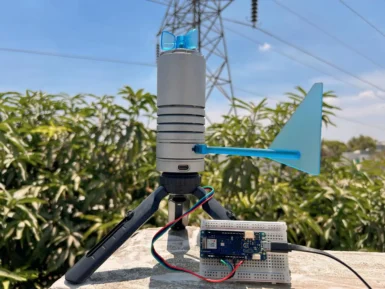
Arduino MKR Relay Proto Shield
Overview
The MKR Relay Protoshield allows you to easily add relays to your MKR board based project.
The shield provides two relays (Datasheet) called RELAY1 and RELAY2 commanded by pin 1 and pin 2 respectively.
The shield also provides an easy connection by means of screw terminal blocks to A1 to A4 analog inputs, I2C and supply voltages.
- Operating voltage 3.3V (supplied from the host board)
- Two relays with NO, COM and NC connections
- Works with battery powered board
- 8 positions screw terminal blocks for easy connections with A1 to A4 Analog input, SCL SDA for I2C, GND and 3.3V output
- 6 positions screw terminal blocks (NO, COM, NC for each relay)
- Carry current: 2 A
- Max. operating voltage: 24 VAC, 50 VDC
- Max. operating current: 1 A
- Max. switching capacity: 62.50 VA, 30W
- Proto area
You can find here your board warranty information.
Need Help?
- On the Software on the Forum
- On Projects on the Forum
- On the Product itself through our Customer Support
Conformities
Resources for Safety and Products
Manufacturer Information
The production information includes the address and related details of the product manufacturer.
Arduino S.r.l.
Via Andrea Appiani, 25
Monza, MB, IT, 20900
https://www.arduino.cc/
Responsible Person in the EU
An EU-based economic operator who ensures the product's compliance with the required regulations.
Arduino S.r.l.
Via Andrea Appiani, 25
Monza, MB, IT, 20900
Phone: +39 0113157477
Email: support@arduino.cc
Documentation
OSH: Schematics
MKR Relay Proto Shield is open-source hardware! You can build your own board using the following files:
Learn more
Get Inspired
Using the Garmin LIDARLite v3HP, Arduino MKR WIFI 1010 and Pushsafer to detect an intruder and send a push notification to a smartphone.

Being able to monitor the weather in real-time is great for education, research, or simply to analyze how the local climate changes over time. This project by Hackster.io user Pradeep explores how he was able to design a simple station outdoors that could communicate with a cloud-based platform for aggregating the sensed data. The board Pradeep selected is the Arduino MKR WiFi 1010 owing to its low-power SAM D21 microcontroller and Wi-Fi/BLE connectivity for easy, wireless communication. After configured, he connected a DFRobot Lark Weather Station, which contains sensors for measuring wind speed/direction, temperature, humidity, and barometric pressure — all in a compact device. Every second, the MKR WiFi 1010’s sketch polls the sensors for new data over I2C before printing it to USB. The cloud integration aspect was achieved by leveraging Qubitro’s platform to collect and store the data for later visualization and analysis. To set it up, Pradeep created a new device connection and copied the resulting MQTT endpoint/token into his sketch. Then once new data became ready, it got serialized into a JSON payload and sent to the topic where a variety of widgets could then show dials and charts of each weather-related metric. To read more about this DIY weather station, you can visit Pradeep’s project write-up here.








